BY JOHN GARVER
 As China and India find themselves in the middle of yet another military standoffin the high Himalayas, their age-old border problem is back on the boil. Or so it would seem. The underlying causes of the current round of hostilities, which broke out last month in the tri-junction of Sikkim, Tibet and Bhutan where China was building a road, run much deeper and are rooted in the deeper churning in the region as a result of the simultaneous rise of two great and proud peoples.
As China and India find themselves in the middle of yet another military standoffin the high Himalayas, their age-old border problem is back on the boil. Or so it would seem. The underlying causes of the current round of hostilities, which broke out last month in the tri-junction of Sikkim, Tibet and Bhutan where China was building a road, run much deeper and are rooted in the deeper churning in the region as a result of the simultaneous rise of two great and proud peoples.
For much of the 60 years that followed the emergence in the late 1940s of China and India from century-long periods of foreign domination, China remained a bit player in the South Asian-Indian Ocean region (SA-IOR). The tyranny of distance imposed on China by the length between its east coast centres of power and the Indian subcontinent combined with the forbidding terrain of the Tibetan plateau and associated mountain ranges separating China and India helped India hedge against China’s thrusts into the region.
Chinese troops hold a banner that reads ‘You’ve crossed the border, please go back’, in Ladakh. Photo: AP
China’s poor and technologically backward economy up until the late 1970s also severely constrained Chinese efforts to assert influence in the SA-IOR. The economic and military superiority of the erstwhile USSR and the United States vis-à-vis China further restricted China’s efforts in the region. Today, none of these traditionally limiting conditions hold any longer. As its position in the region grows rapidly, the question is: will China succeed in becoming the paramount power in the SA-IOR?
China does not explicitly aim for primacy in the SA-IOR. But the large disparity between Chinese and Indian capabilities, combined with the evaporation of the tyranny of distance may nonetheless make this the outcome. China’s leaders also view primacy in the region as an essential basis for its eventual catch-up with the US as a leading global power.
China’s creeping encirclement of India confronts New Delhi with the choice of either accommodating itself to Chinese primacy or of hedging in partnership with the US and Japan against China’s advances, fuelling the regional rivalry even further.
China’s rise in the region
China’s massive connectivity push via its Belt and Road Initiative (BRI), premised on its strong economic and technological capabilities, combined with the emergence of China as a major naval power in the Indian Ocean, are transforming the geopolitics of Eurasia. Its navy has emerged as a powerful force designed to fight and win an “anti-access, area-denial” war with the US over Taiwan. Since 2008 the Indian Ocean has become a major theatre of PLA Navy (PLA-N) operations.
Soldiers of China’s People’s Liberation Army (PLA) stand on a ship sailing off from a military port in Zhanjiang, Guangdong province on Tuesday. Photo: Reuters
The political significance of geography has always been a function of available technology. The railway and highway revolutions that integrated many other regions of the world are today tying together East Asia and the SA-IOR, and it’s largely being done by China. Just as in earlier eras, when spheres of imperial influence centred on Rome, Berlin, Moscow or Chicago, today China’s high-speed rail lines, using technology “reinnovated” from Siemens, radiate outwards from Urumqi, Kashgar, Lhasa and Kunming.
China’s high-speed railways and highways, both of which are often more commodious than comparable US trunk routes, carry – or soon will carry – people and goods to Kyaukpyu on Myanmar’s Bay of Bengal and Pakistan’s Karachi to Greece’s Piraeus and Turkey’s Istanbul. The first-ever railway in Tibet, linking Lhasa with Xining in China’s northwest, opened in 2006. Soon that line will reach Kathmandu, and if New Delhi agrees, north India. Dhaka in Bangladesh and Bandar Abbas in Iran, to India’s east and west respectively, will soon be joined to China by modern rail and road.
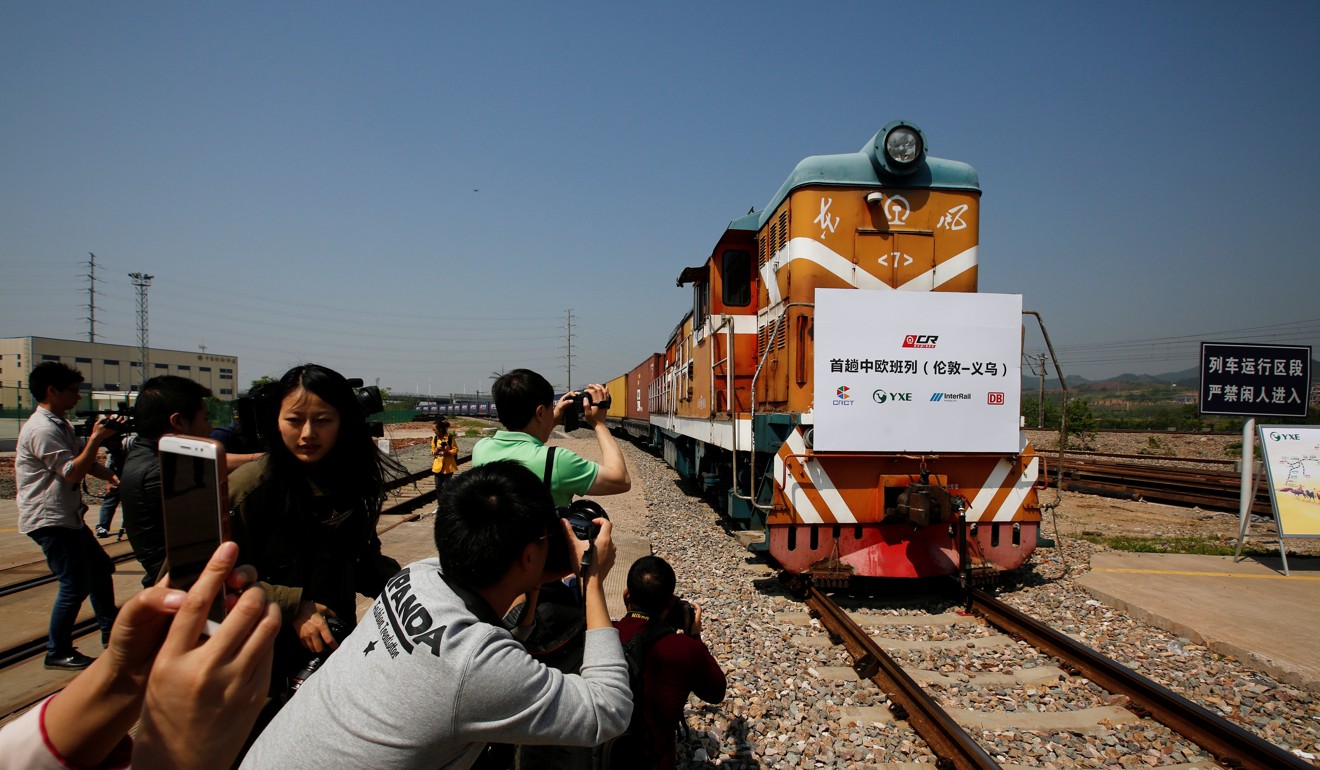 People take pictures as a train carrying containers from London arrives at the freight railway station in Yiwu, Zhejiang province, in China. Photo: Reuters
People take pictures as a train carrying containers from London arrives at the freight railway station in Yiwu, Zhejiang province, in China. Photo: Reuters
With the “maritime Silk Road”, the “unitisation” (containerisation) revolution that transformed maritime commerce starting in the 1960s is now being applied by Chinese companies to link new ports built and financed by China with oceanic highways to these new rail and highways. Trade, investment, industrial zones, services of all sorts will follow the new rails, roads and ports. Wide reaches of the SA-IOR will be drawn into the orbit of China’s powerful economy. Political leverage resulting from high levels of indebtedness to China will follow.
The breathtaking geographic scope and SA-IOR focus of Beijing’s BRI is apparent in the “Vision for Maritime Cooperation under the Belt and Road Initiative” issued by China’s National Development and Reform Commission and the State Oceanic Administration in June 2017: “[China] … will focus on building the China-Indian Ocean-Africa-Mediterranean Sea Blue Economic Passage by linking the China-Indochina Peninsula Economic Corridor, running westward from the South China Sea to the Indian Ocean, and connecting the China-Pakistan Corridor (CPEC) and the Bangladesh-China-India-Myanmar Economic Corridor (BCIM-EC).” In other words, between Suez and Malacca, from the Arabian Sea to the east coast of Africa.
 A Pakistan Army soldier looks on during the opening of a trade project in Gwadar port, some 700km west of Karachi. Photo: AFP
A Pakistan Army soldier looks on during the opening of a trade project in Gwadar port, some 700km west of Karachi. Photo: AFP
Other Indian Ocean ports identified by the “Vision” include: Malacca, Gwadar, Kyaukpyu, Colombo and Hambantota in Sri Lanka, and railways linking Ethiopia with Djibouti, and Mombasa with Nairobi. Building close “strategic partnerships” with countries cooperating with BRI has thus become a key component of China’s contemporary diplomacy.
How the link-up of overland rails and roads from China to ports on the Indian Ocean littoral would work was illustrated by a large poster observed by the author at Wanding on the Yunnan-Myanmar border in mid-2016 (below). Commerce would flow from Wanding, the “National level Chinese port closest to the Indian Ocean”, to Kyaukpyu on the Bay of Bengal, and thence to the entire Bay of Bengal region, including Bangladesh, eastern and northeastern India, and northern Myanmar.
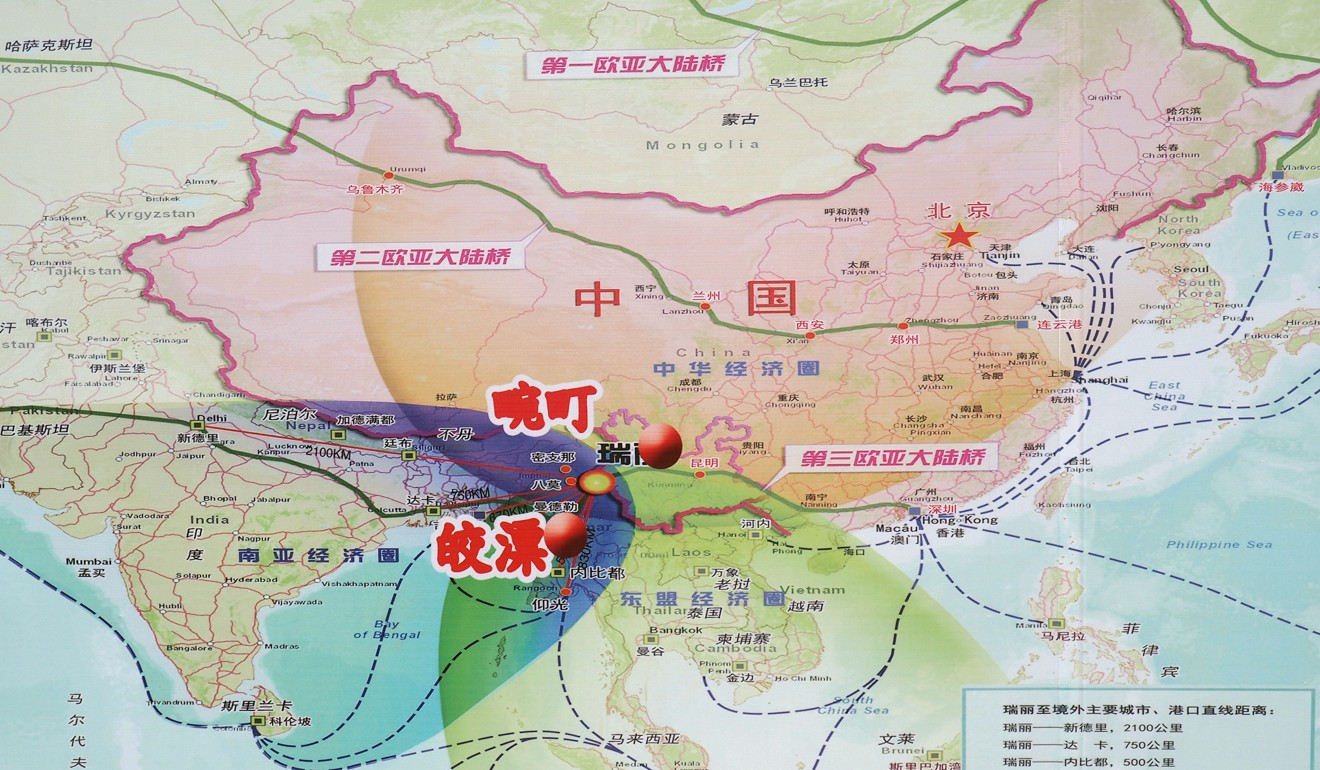 A poster mapping the regional connectivity plan, in Wanding, on the Yunnan-Myanmar border. Photo: John Garver
A poster mapping the regional connectivity plan, in Wanding, on the Yunnan-Myanmar border. Photo: John Garver
China’s swift emergence as a leading naval power in the Indian Ocean complements and builds on the BRI. PLA-N warships entered the Indian Ocean for the first time only in 1985 when a two-ship squadron called at Karachi and Colombo. For the next 24 years, similar small squadrons called at Indian Ocean ports every couple of years. In 2009, the PLA-N began rotating three-ship task forces through the Indian Ocean as part of the international anti-piracy effort off Somalia. It has since sustained a growing presence in the Indian Ocean.
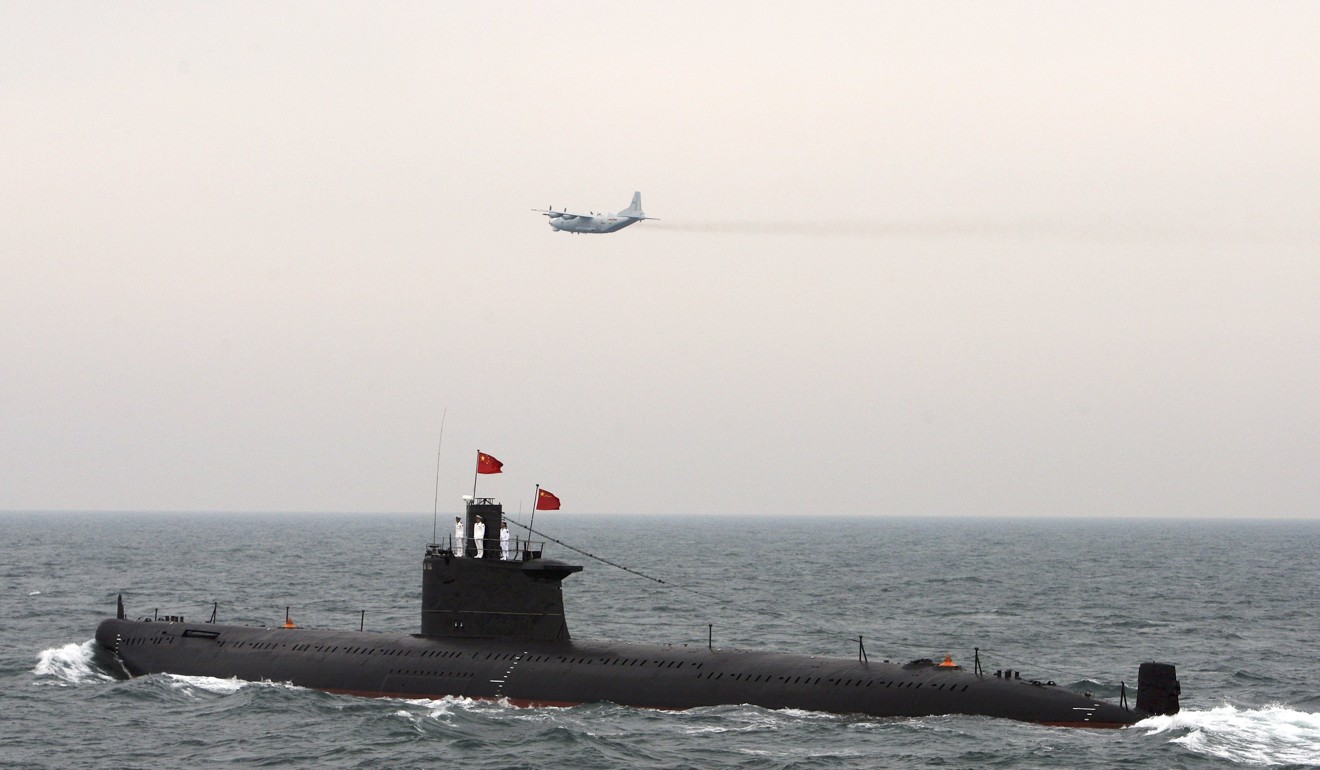 A military aircraft flies past a Chinese Navy submarine at an international fleet review in Qingdao, Shandong province. Photo: Reuters
A military aircraft flies past a Chinese Navy submarine at an international fleet review in Qingdao, Shandong province. Photo: Reuters
Atomic powered attack submarines joined anti-piracy task forces and called at littoral ports. In 2016 China acquired a long-term lease on a naval supply facility at Djiboti at the entrance to the Red Sea. It also took over from the Singapore Port Authority management of the strategically located Pakistani port of Gwadar, while beginning the supply of eight submarines to Pakistan’s navy. In short, China is becoming a resident power in the Indian Ocean, entering by land and by sea.
India’s response
The filling of the space around India by China is objectionable to mainstream Indian opinion for several reasons. Indian nationalists see the SA-IOR as a sphere shaped for millennia by civilisational influences radiating from the subcontinent. China’s influence in the then-remote region was occasionally significant, but overall less important than India’s. India’s sense of national greatness resembles, in this regard, China’s own view of East and Southeast Asia.
Colonial Britain’s strategic doctrine stressed the integral nature of the SA-IOR and the importance of excluding potentially hostile powers from that region. After India’s independence in 1947, Indian diplomacy continued this strategic tradition. Partial exemptions were made for the USSR in the 1970s and the US in the 2000s, but for China, never.
China’s “all weather” entente cordiale with Pakistan has meant that efforts to bolster Pakistan against India have been a constant of Chinese diplomacy: building up Pakistan’s military-industrial base; helping Pakistan develop nuclear weapons and ballistic missiles; revitalising Pakistan’s economy under the China-Pakistan Economic Corridor; and transferring to Pakistan many of the potent anti-ship weapons developed by the PLA to counter the US Navy. The quasi-alliance between China and Pakistan means that China would almost certainly support Pakistan and might well enter in support of Pakistan a fifth round (after 1947, 1965, 1971 and 1999) of war between India and Pakistan should there be one.
Beijing also claims India-administered Arunachal Pradesh as part of Tibet, rejects India’s protectorate relation with Bhutan, is equivocal regarding Sikkim’s status as part of the Indian union, and occasionally connives with efforts of Nepali nationalists to scrap historic security guarantees to India. In the 1960s and 1970s, China supported armed separatist insurgencies in India’s impoverished Northeast, not failing to play the race card against New Delhi (i.e., many of the Northeastern peoples are racially-ethnically closer to those of southwest China than to the Indian heartland).
India’s territorial link with its Northeastern states passes through a narrow bottleneck at Siliguri, only 27km wide and 100km from China’s Chumbi valley, rich in Chinese military forces. Powerful Chinese forces are poised on India’s Himalayan borders, with fine roads and rail links northward to logistics links deep into Chinese territory, and with the important tactical advantage of downhill lines of advance.
 Young Buddhist monks in the Nubra Valley of India's Ladakh region near the Chinese border. Photo: AFP
Young Buddhist monks in the Nubra Valley of India's Ladakh region near the Chinese border. Photo: AFP
The new highways and railways being built or planned by China in northern Myanmar are only several hundred kilometres from potential battlefields in, for example, India’s Assam state. Indian attempts to reinforce forces defending its Northeast across the Bay of Bengal could be interdicted by Chinese “anti-access, area denial” systems deployed via fine highways and rail lines to Kyaukpyu. From the Indian perspective, China’s closing in on India in the SA-IOR translates into threats to its ability to defend itself against a hostile China.
India responded to China’s push into its neighbourhood by intensifying cooperation with the US and Japan, two countries which share India’s aversion to possible Chinese primacy. India’s new strategic partnership with the US goes back to the months after India’s 1998 nuclear tests when Washington aligned initially with Beijing against India, only to rethink the issue and conclude that a powerful India better served US interests in the era of an increasingly powerful China.
A wide array of India-US security and military cooperation advanced during the 16 years of the Bush and Obama administrations. As for Japan, the growth in China of popular but government-encouraged anti-Japanese resentment, plus increasingly assertive Chinese challenges to Japan’s control over the disputed Senkaku Islands nudged Japan towards a more guarded approach to China.
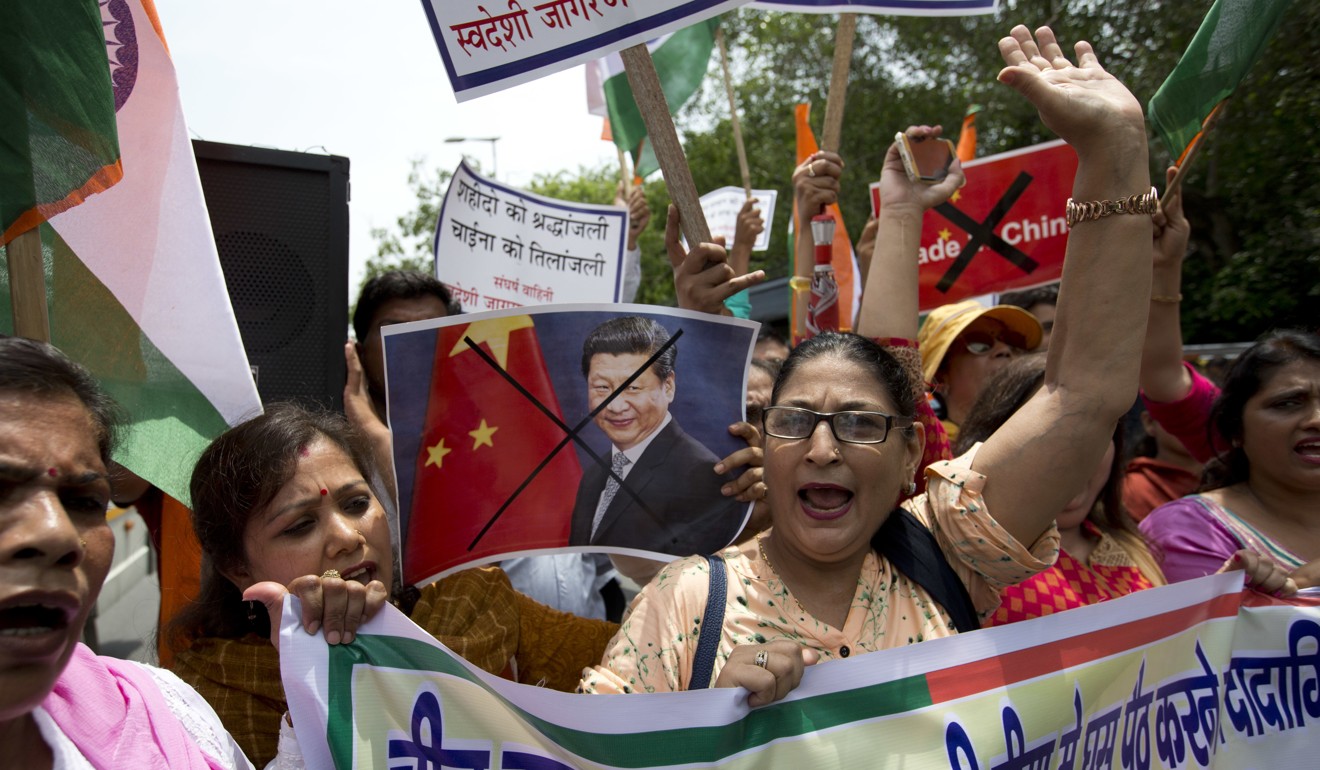 Activists of Swadeshi Jagaran Manch, a Hindu right wing organisation, shout slogans against China in New Delhi to protest against China's decision to suspend Hindu pilgrimage to Kailash Mansarovar from Nathu La. Photo: AP
Activists of Swadeshi Jagaran Manch, a Hindu right wing organisation, shout slogans against China in New Delhi to protest against China's decision to suspend Hindu pilgrimage to Kailash Mansarovar from Nathu La. Photo: AP
Japanese defence planners began to grapple with the problem of securing Japanese commerce across the Indian Ocean against interdiction by the PLA-N, and ponder Japan’s geopolitical situation if China succeeded in achieving primacy in the SA-IOR. Under both Congress Party and the current Bharatiya Janata Party governments, India responded positively, if cautiously, to American and Japanese invitations for broader security cooperation. Prime Minister Narendra Modi has been less risk-adverse than his Congress predecessors in moving forward India’s strategic partnerships with the US and Japan.
As the PLA-N became a major power in the Indian Ocean, India, the US and Japan intensified their naval cooperation. India and the US began a series of annual joint exercises in 1992. Japan’s navy joined those exercises in 2007, but China’s strong objection induced New Delhi to disinvite Japan. Modi’s government, less swayed by Chinese objections, allowed Japan to become a permanent member of the exercises.
These exercises have grown in size and complexity, with anti-submarine warfare (ASW) operations becoming a major focus. In 2015 the Indian Navy began operating Boeing-built P-8A Poseidon maritime patrol/ASW aircraft out of Chennai. Increased movement of PLA-N submarines into the Indian Ocean led to deployment of P-8s to India’s Andaman and Nicobar Islands the next year. The P-8s were equipped with some of the most modern American ASW technology, including a cutting-edge magnetic anomaly detector, depth charges, rockets and lightweight torpedoes.
Last month Washington approved the sale to India of 22 maritime surveillance drones able to fly for over 27 hours. This month India, US and Japan conducted the largest-ever Malabar exercise, focused on detecting submarines attempting movement via the Malacca Strait into the Bay of Bengal. Beijing countered by surging PLA-N subs into Bay of Bengal.
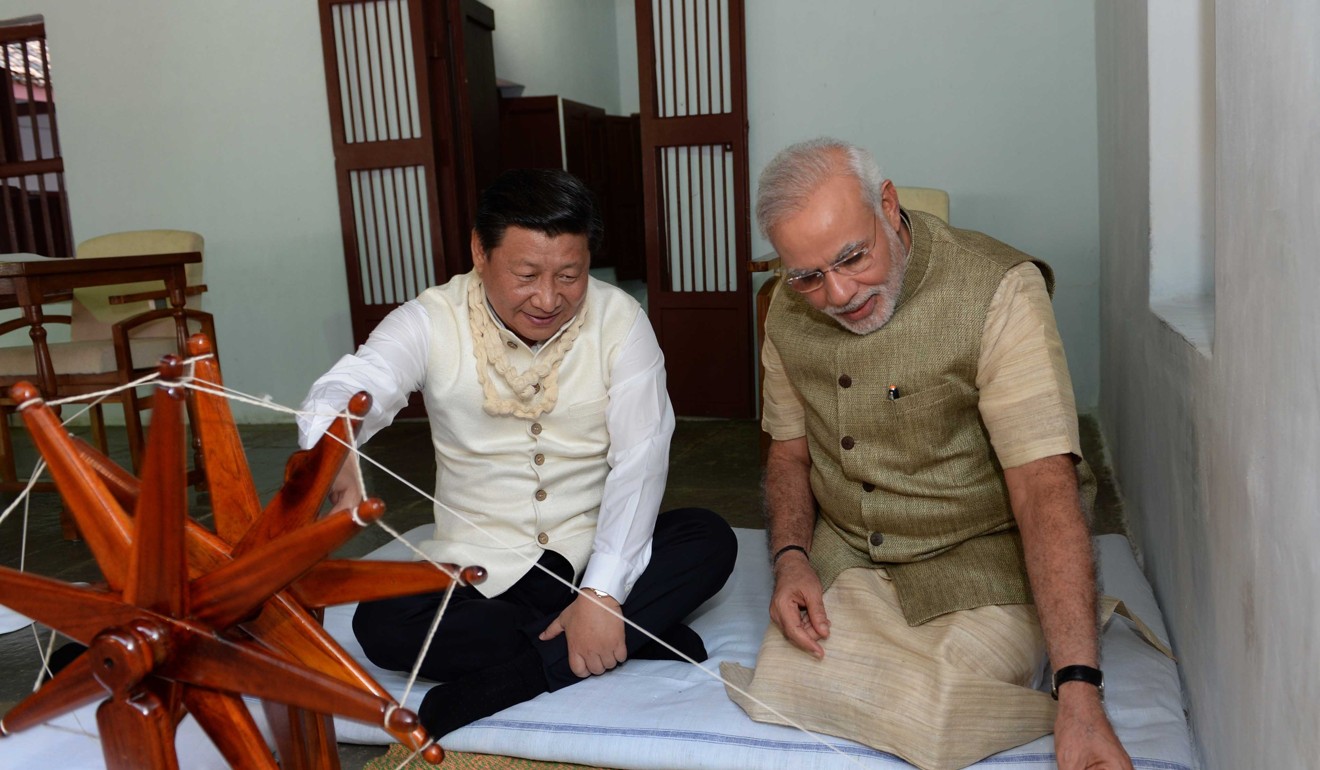 Chinese President Xi Jinping rotates a spinning wheel that was once used by Mahatma Gandhi as he visits Gandhi's former residence along with Indian Prime Minister Narendra Modi in Gujarat, India. Photo: Xinhua
Chinese President Xi Jinping rotates a spinning wheel that was once used by Mahatma Gandhi as he visits Gandhi's former residence along with Indian Prime Minister Narendra Modi in Gujarat, India. Photo: Xinhua
It was against this background that the stand-off on the Sikkim-Tibet border occurred last month. Beijing was reminding New Delhi that while PLA-N might be inferior in ASW, China was a mighty power with other means and other options. If Delhi trampled too egregiously on China’s interests, Chinese forces might respond by seizing part or all of India’s Northeast, putting it in a strong position from which to dictate peace terms. The US would be of little help if Beijing found it necessary to deliver a firm rebuff to New Delhi, the nationalist Chinese newspaper Global Times warned.
India’s vulnerability
From Beijing’s perspective, New Delhi is colluding with Japan and the US to stifle China’s natural and rightful rise to a position manifesting “the China Dream” and to which China’s glorious history entitles it. The appropriate response for India would be, Beijing believes, to credit China’s reassurances of non-threat and friendship, partner with China on the BRI and to deal with regional security issues. Instead, New Delhi is linking up with “anti-China forces” in Tokyo and encourages the US to oppose China’s rise.
India is in a vulnerable position. Unlike Japan, it is not protected by an alliance with the US. India has stressed its “strategic autonomy” and the fact that it does not desire alliance with the US. The reasons for this are complex, but one consequence is that a Chinese war with India does not automatically mean a Chinese war with the US, unlike the situation with Japan.
Beijing might conclude that New Delhi is the weakest link in the chain of “anti-China containment” (for such is China’s perception) being built up across the SA-IOR. The US might object to Chinese chastisement of India, but could not fundamentally alter the outcome. Moreover, India’s military modernisation is proceeding slowly. The PLA enjoys considerable superiority over India’s military in most areas. As Indian military modernisation proceeds with US and Japanese assistance, the PLA’s relative advantage may diminish. It might make sense for China to teach India a lesson before China’s advantage is eroded. ■
John W Garver is emeritus professor at Sam Nunn School of International Affairs, Georgia Institute of Technology in Atlanta, and author of Protracted Contest: Sino-Indian Rivalry in the Twentieth Century, and China’s Quest: The History of the Foreign Relations of the People’s Republic of China
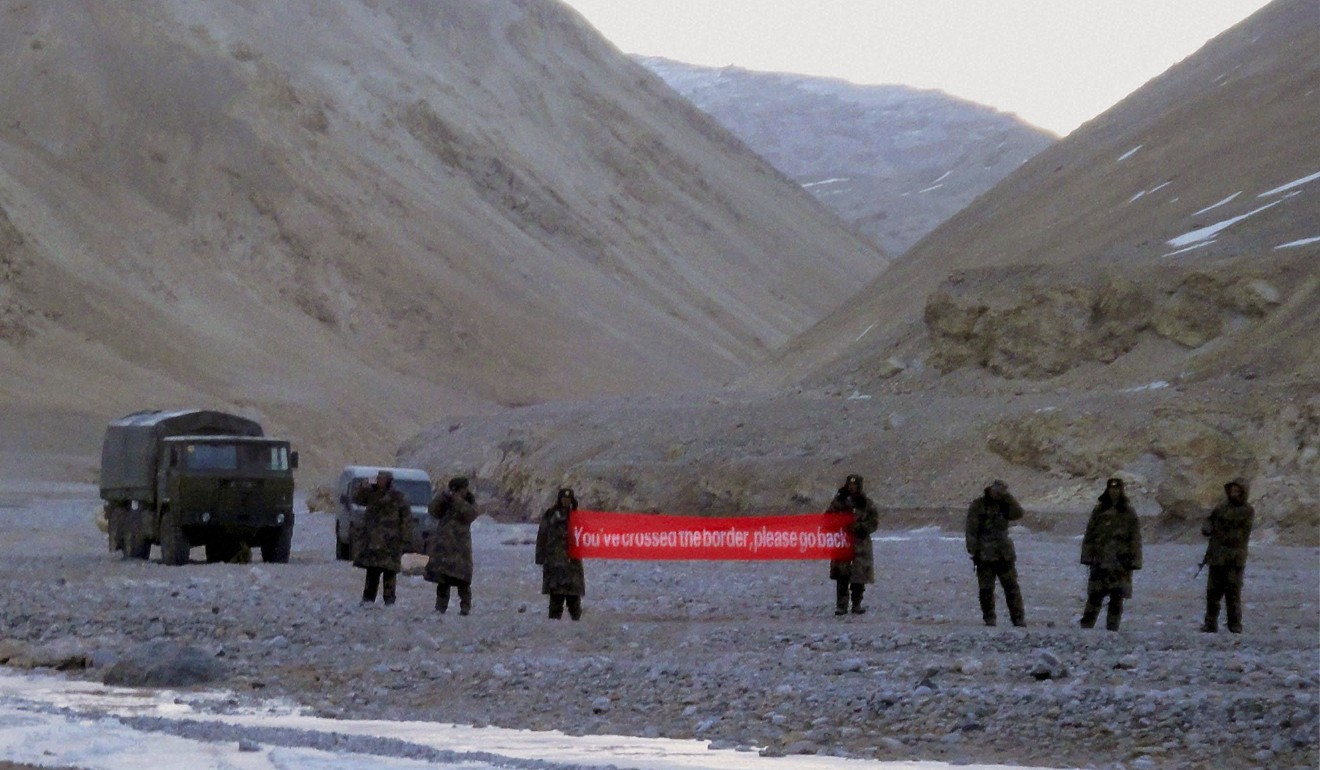

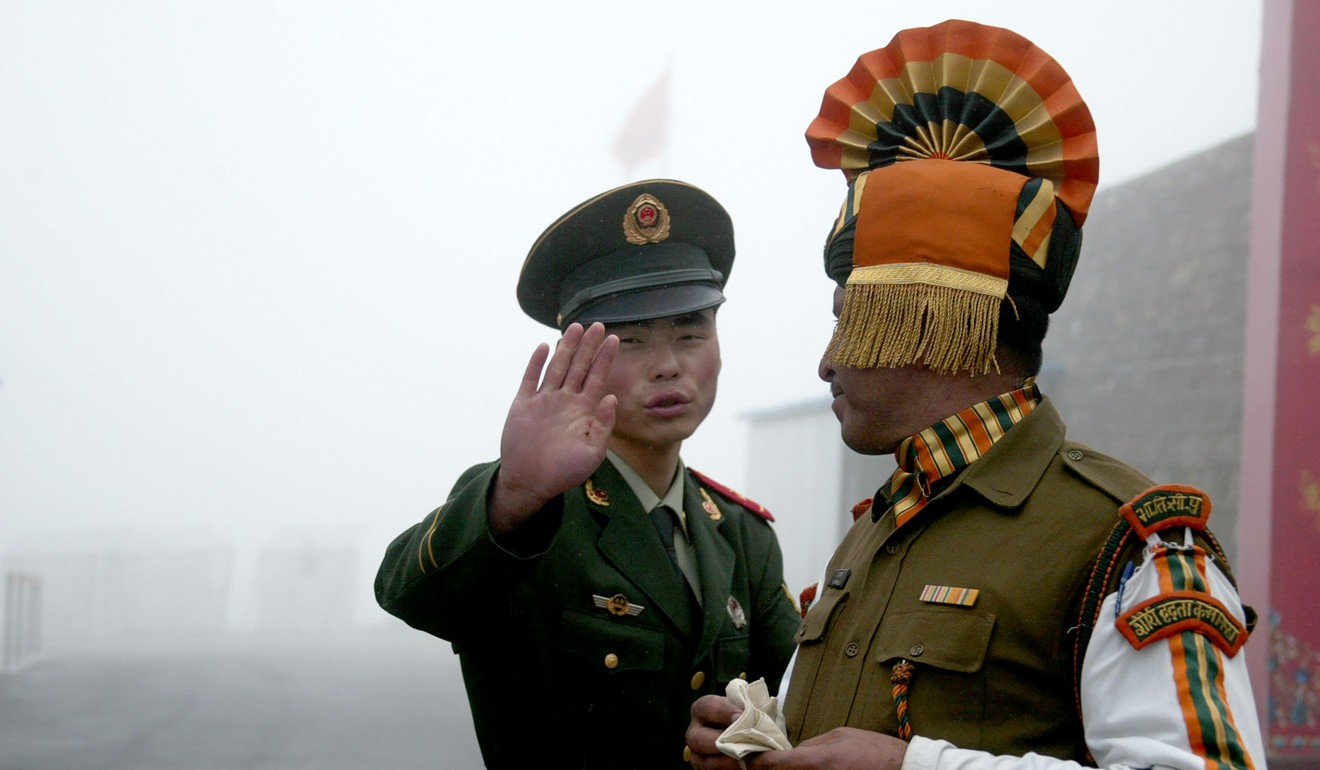
No comments:
Post a Comment